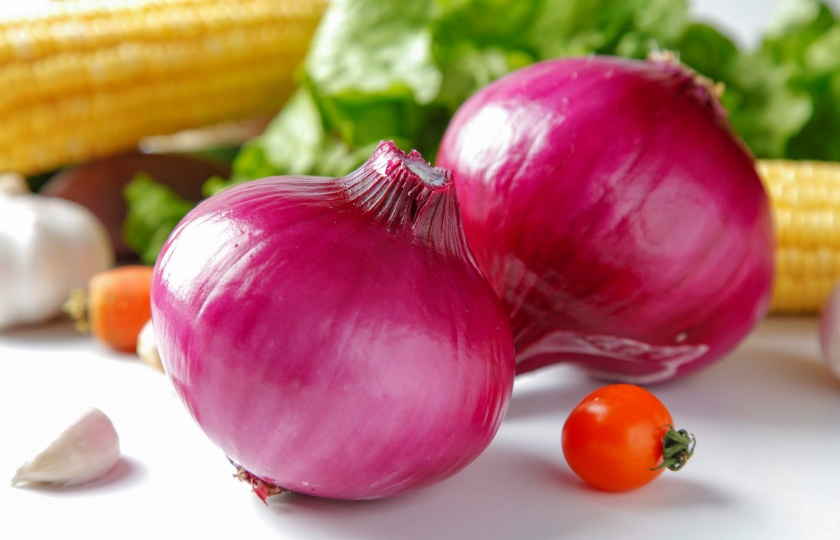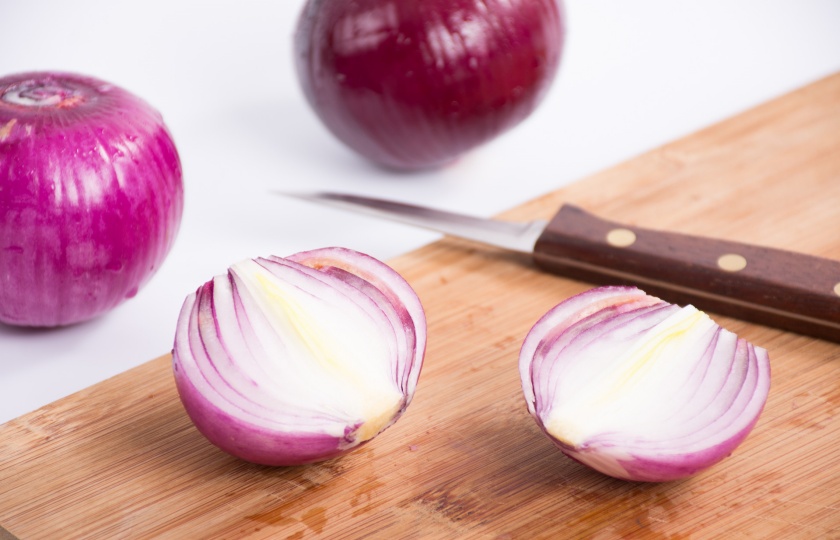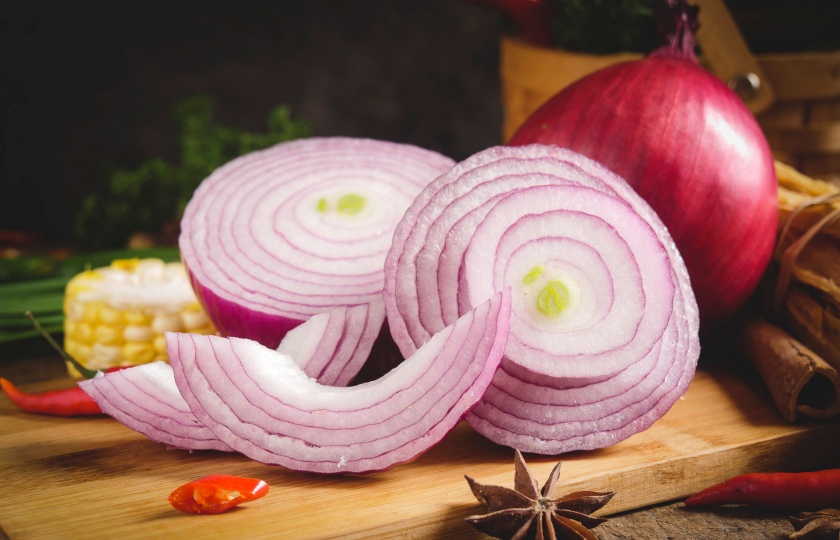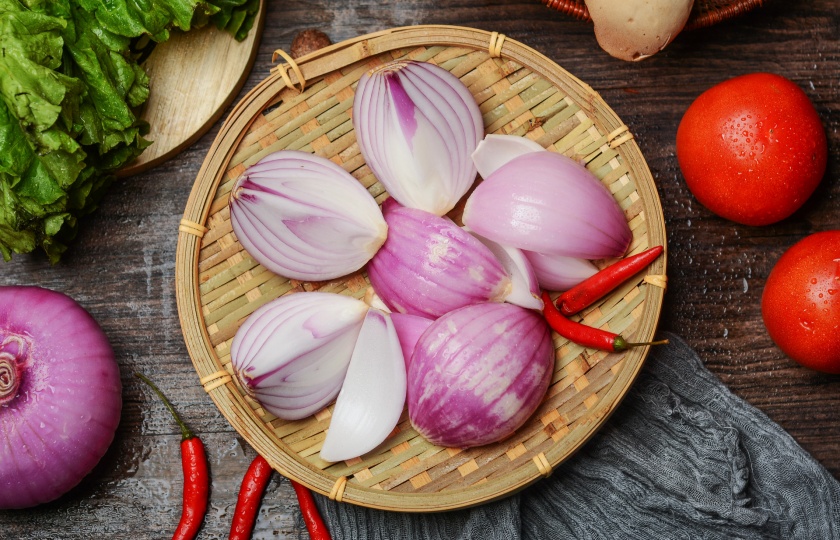Unlocking Flavor Secrets: Why does cooking always involve onion?

Previously, when I went to a friend's house for a meal, I found that there was onion in every dish at his house. I was very surprised. Does onion have any magical features? Later, after I cooked by myself, I realized the importance of onion. Today, I will tell you "Why is onion always needed when cooking?".
Why does cooking always involve onion?
There are many reasons why onion is always used when cooking. The common ones are as follows:
First of all, onion has a unique taste. Its slightly spicy and sweet taste can enhance the flavor and aroma in many dishes. For example, when I make stir-fried pork, adding some onion mixes the meaty aroma with the special taste of onion and improves the taste of the dish.
In terms of nutrition, onion contains rich vitamin C, B vitamins, potassium, dietary fiber and other components. Vitamin C is good for the skin, potassium is beneficial to heart health, and fiber can promote intestinal peristalsis.
And onion also has the function of removing fishy smell. When I make fish, shrimp and meat, putting some onion in can help effectively reduce the fishy smell and add rich taste levels to the food at the same time.
Another thing is that onion is a kind of food that is very easy to preserve. Putting it in the refrigerator can be stored for a long time. You can take it out when you need it.
Finally, onion has bright colors. Using it can help enrich the color of dishes and thus increase the attractiveness of dishes.
How to cut an onion?
Cutting onion seems very simple, but there are also many tips:
To cut onion, first you need to cut off both ends of the onion so that the onion can stand firmly on the cutting board. If the onion is relatively large, it can be cut in half.

If you want to cut onion into shreds, after cutting the onion in half, peel off the outer layer. Then place the cut surface of the onion downward on the cutting board. Start from one end and cut horizontally with a knife, but don't cut off the root. Let the root play a connecting role. Then cut vertically, so that it is cut into onion shreds.
If you want to cut onion into chunks, first peel the onion as well. Then cut it in half and cut each half into several petals. Cut off the root of each petal, and then cut it into the desired chunk size.
Precautions
Onion contains onionin. When cutting, it is easy to sting the eyes. There is a tip that soak the onion in water for a while before cutting, or light a candle beside it. This can reduce the irritation.
How to cook onions on stove?
Prepare ingredients
Onion, olive oil, salt, black pepper, sugar, rosemary or thyme (optional).
Steps
First peel and wash the onion, and then cut it into onion slices or onion chunks. If you want a stronger onion flavor, you can cut it a bit thicker.
Pour a small amount of oil, such as olive oil or vegetable oil, into the pot. Turn on low heat. After the oil is slightly hot, about 30 seconds later, put the cut onion in and stir continuously to make it heated evenly.
If cooking onion slices, it will gradually become soft and transparent after about 3 - 5 minutes. If it is onion chunks, it may take 5 - 7 minutes.
Add seasonings according to personal preference. For example, adding salt can help onion release water faster and make it softer. Adding a small spoonful of sugar will give onion a natural sweetness. You can also add black pepper to add flavor.
If you want a richer onion flavor, you can add herbs such as rosemary or thyme when cooking to let onion absorb their aroma.
Finally, continue cooking until the onion reaches the desired softness. For example, if making onion soup, it needs to be cooked until very soft and almost mushy. For other dishes, it can be taken out of the pot when it is slightly soft.
How to caramelize onions?
Prepare ingredients and tools
Ingredients: 1 kilogram of fresh onion, 20 grams of butter, 1/2 tablespoon of salt.
Tools: Pot, stove, knife, cutting board, stirring spoon.

Process onion
Peel: First peel off the outer skin of the onion to ensure the surface of the onion is clean.
Cut: Cut off the head and tail, cut it in half from the middle, and remove the core. Cut along the grain of the onion into onion segments about 0.5 centimeters thick.
Making steps
Melt butter: Put the pot on the stove and preheat it to medium temperature. After preheating, add butter and wait until the butter is completely melted.
Stir-fry onion: Put all the cut onion segments into the pot, add salt, and stir-fry quickly with medium-high heat for about 10 minutes.
Simmer over low heat: Transfer the onion to a frying pan or large basin and make sure the heat is adjusted to the lowest. Stir every 20 minutes to make the onion heated evenly.
Observe the change of water content: As the cooking time prolongs, the onion will start to release a large amount of water. After about 1 hour, the onion juice starts to bubble; after 2 hours, the onion starts to turn yellow; after 3 hours, the water content gradually decreases and the color becomes darker.
Strengthen stir-frying: After 4 hours, the water is basically dried up. At this time, the frequency of stir-frying needs to be increased. Stir every 10 minutes to prevent burning. After 4 and a half hours, the onion basically contains no water and presents a beautiful caramel color. At this time, stir every 2 - 3 minutes to ensure that the onion is heated evenly and does not burn.
Finish caramelized onion: When the onion presents a uniform caramel color and contains no water at all, it can be taken out of the pot. After the caramelized onion is cooled to room temperature, put it in the refrigerator for storage. Take out an appropriate amount when using.
Precautions and tips
Choose yellow onion: Yellow onion has a higher sugar content and is easier to make caramel color and sweetness.
Control the heat: The key to making caramelized onion is to control the heat. In the early stage, stir-fry quickly with medium-high heat to soften the onion and release water; in the later stage, simmer over low heat to force out the water and make caramel color. The heat should not be too high to avoid burning.
Stir patiently: The making process of caramelized onion requires patience and care. Stir every once in a while to ensure that the onion is heated evenly and does not burn.
Refrigerate for storage: The made caramelized onion can be put in the refrigerator for storage. Take out an appropriate amount when using. The refrigerated caramelized onion tastes better.
Which cuisine uses the most onions?
If you want to say which cuisine uses onion the most, Western cuisine must be one.
Like French onion soup, this is a classic among classics. A large amount of onion is simmered for a long time and becomes soft, glutinous and sweet. It is the soul of the whole soup.

In Italian cuisine, onion can often be seen in pizza and pasta sauce. It can add rich flavor to dishes and make the taste more intense and layered.
In Middle Eastern cuisine, onion is also used frequently. For example, in barbecue dishes, onion is often used to marinate meat. It can not only remove the fishy smell, but also make the meat absorb the sweetness of onion. The roasted meat is tender and juicy and also has the fragrance of onion.
In Chinese cuisine, there are also many cuisines that will use onion. For example, in Xinjiang cuisine, there is onion in big plate chicken. Onion plays a role in enhancing the flavor and coloring in it. It makes the color of big plate chicken more attractive and the taste more mellow.
In Shandong cuisine's braised sea cucumber with scallions, although the main character is sea cucumber, the clever use of onion is also crucial. The fragrance of onion can enhance the flavor of the whole dish. Therefore, different cuisines all have uses of onion.
What are the benefits of onion?
Supplement nutrition
Onion contains rich vitamin C, carotene, dietary fiber, as well as phosphorus, iron and many other essential nutrients for the human body. Regular consumption of onion can supplement these nutrients for the body and provide the energy needed for the metabolism of the body.
Appetizing and promoting digestion
Onion contains onion allicin, which is also the source of the irritating smell of onion. Moreover, onion allicin can also stimulate the secretion of digestive juices such as saliva. Appropriate consumption can help increase appetite and play an appetizing role.
Moisturizing the intestines and promoting defecation
Onion contains a large amount of dietary fiber. Dietary fiber cannot be absorbed by the body after entering the body. It will absorb water and expand in the body to increase the amount of feces. At the same time, it can also stimulate intestinal peristalsis and help improve and relieve constipation symptoms.
Assist in sterilization
Onion also contains a certain amount of sulfide components, which has a certain sterilization effect. However, after entering the body, this effect will be limited. For patients with flora imbalance, they can eat onion to assist in sterilization.
Assist in protecting blood vessels
Onion also contains rich prostaglandin A. Prostaglandin A itself has the effects of dilating blood vessels and reducing blood viscosity. Appropriate consumption is good for protecting blood vessels and is very suitable for patients with hypertension and hyperlipidemia.























